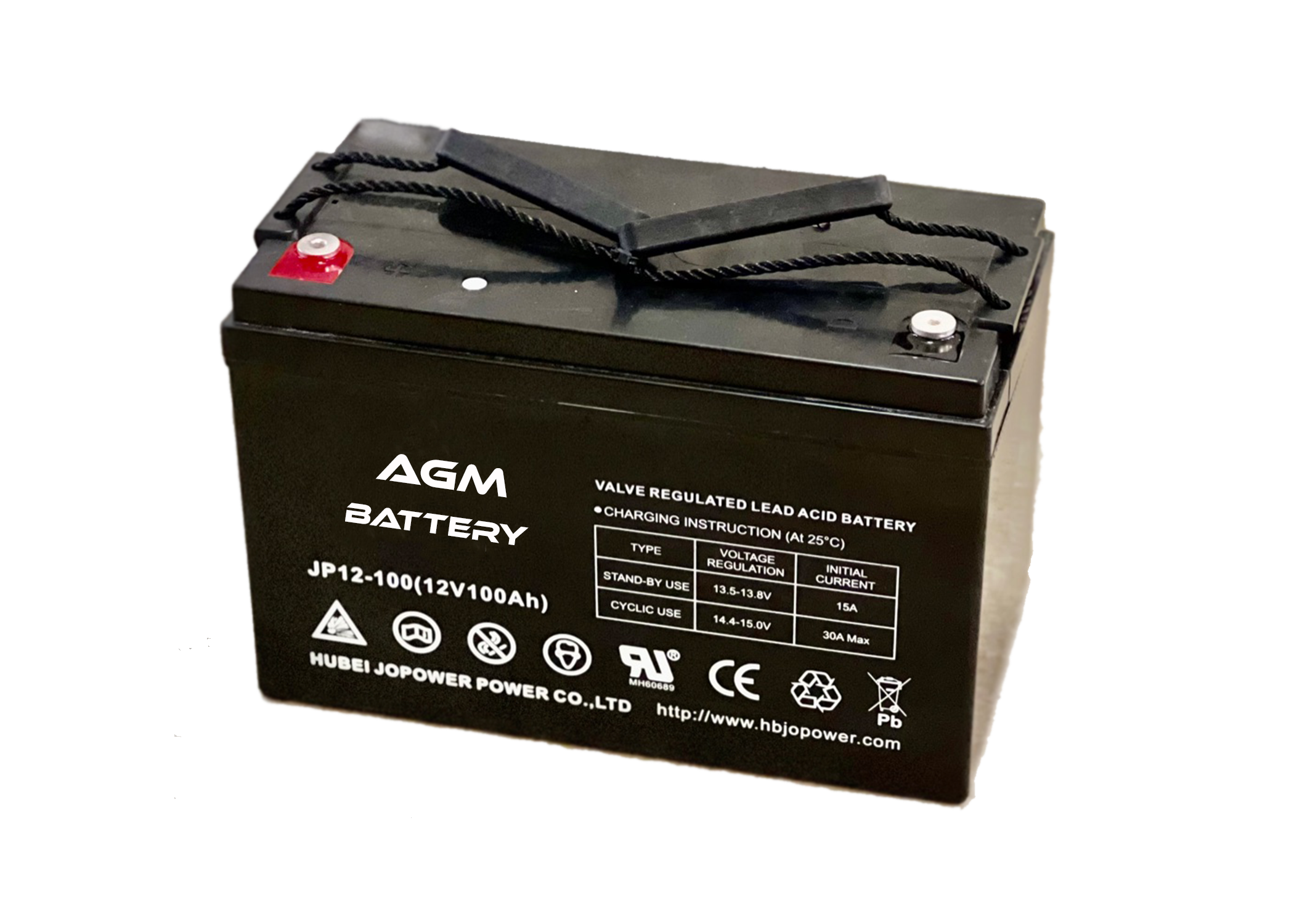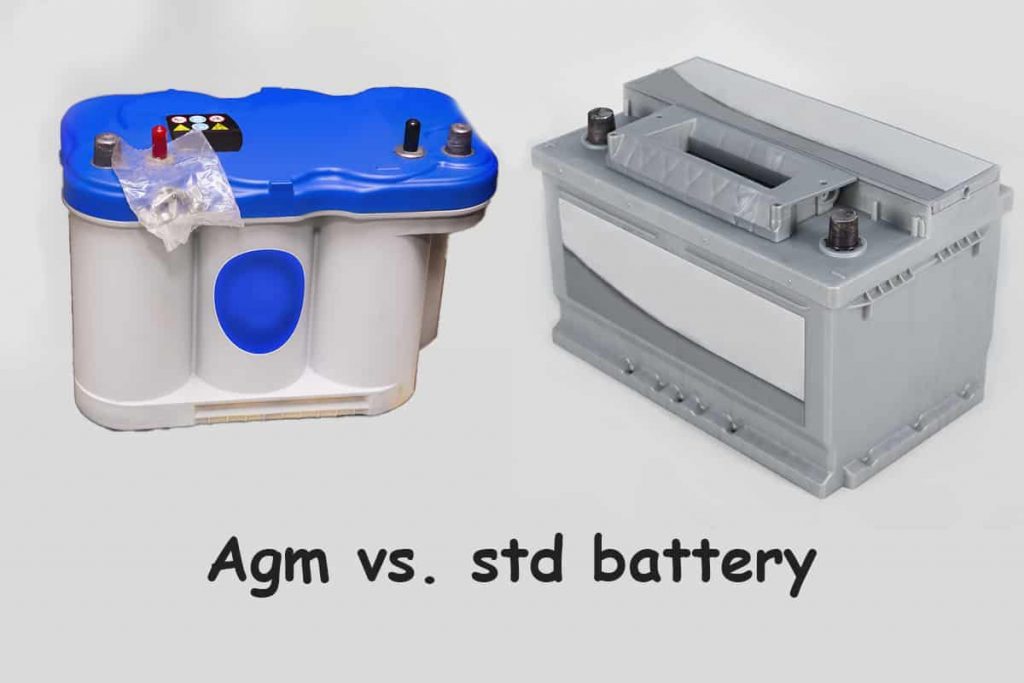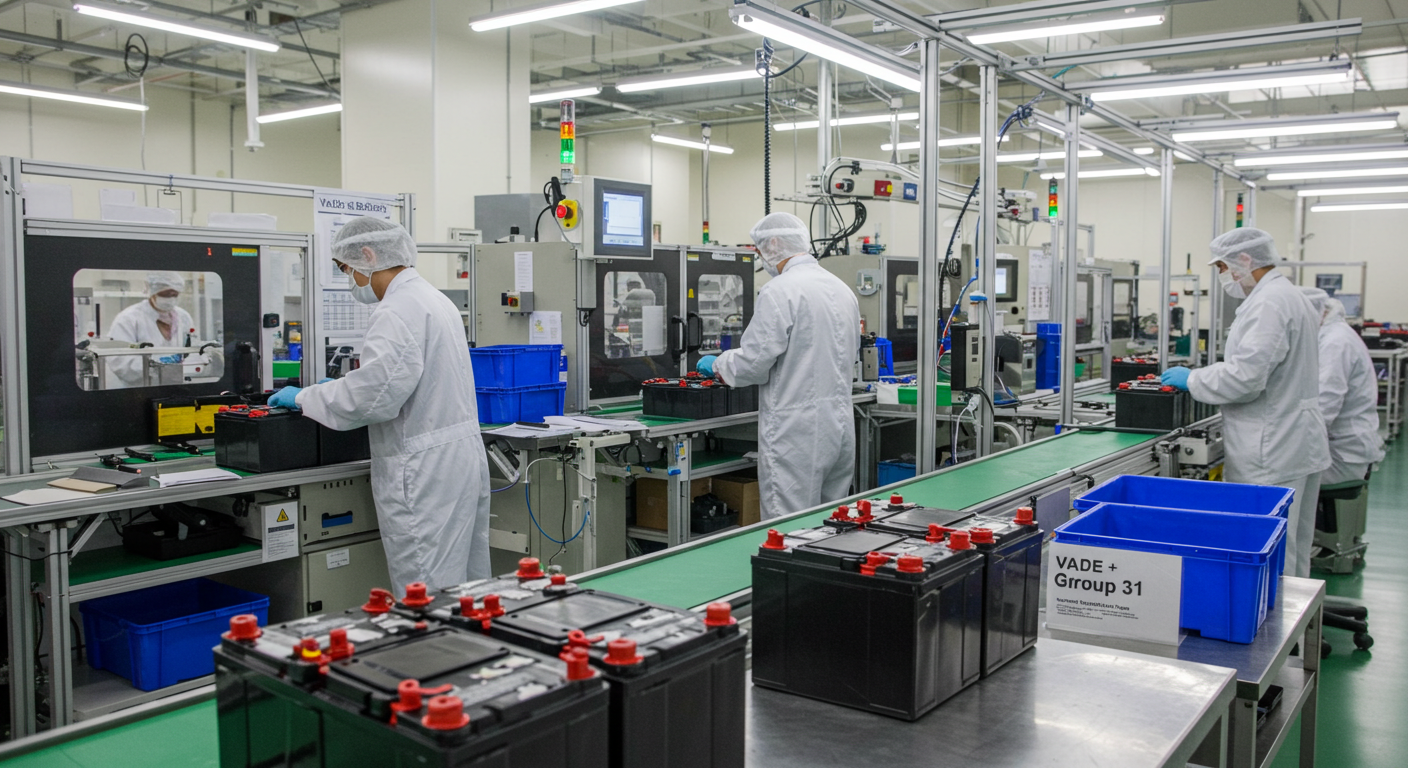-
29 W. Pawnee, Bloomfield, NJ 07003
12V STD vs. 12V AGM: Which Battery Is Right for You?
The right battery choice can mean the difference between reliable power and costly failures in today’s technology-driven world. Our comprehensive 2025 comparison reveals that AGM batteries offer 5x faster charging, 60,000+ engine starts, and virtually zero maintenance compared to standard lead-acid alternatives—but at 1.5-2x the cost. This data-driven guide examines critical differences in performance, lifespan, and application suitability between 12V STD and AGM batteries to help you make a cost-effective decision aligned with your specific power requirements.
Understanding Battery Technologies
Battery technology has evolved significantly over the decades, offering consumers more options tailored to specific applications. Before comparing these two popular battery types, let’s understand what each one is and how they function.
What is a 12V STD Battery?
A standard lead-acid battery (STD) represents time-tested technology that has been reliably serving various applications for over a century. These batteries feature a design where lead plates are submerged in liquid electrolyte (a mixture of sulfuric acid and distilled water).

The fundamental construction includes:
- Negative plates (cathode) made of sponge lead (Pb)
- Positive plates (anode) constructed from lead dioxide (PbO₂)
- Liquid sulfuric acid (H₂SO₄) serving as the electrolyte
These batteries generate power through chemical reactions between the electrolyte and lead plates. With a nominal voltage of 2 volts per cell, they’re typically configured in 6V or 12V arrangements. Despite being an older technology, STD batteries remain a popular choice for many applications due to their reliability and affordability.
What is a 12V AGM Battery?
AGM (Absorbent Glass Mat) batteries represent a significant advancement in lead-acid battery technology. Unlike standard batteries, AGM batteries feature a unique design where the electrolyte is absorbed into fiberglass mats that are placed between the lead plates.

This distinctive construction provides several key benefits:
- The electrolyte is immobilized within the glass mat material
- The battery is completely sealed and spill-proof
- Lead plates soaked in immobilized electrolyte allow faster charging
- Lower internal resistance compared to standard lead-acid alternatives
First introduced in the early 1990s, AGM technology has gained popularity for high-demand applications like modern vehicles with start-stop systems, marine equipment, and renewable energy storage systems.
Key Differences Between STD and AGM Batteries
The fundamental design differences between these battery types create significant variations in performance, maintenance, and application suitability. Let’s examine these differences in detail.

Design and Construction
STD batteries contain liquid electrolyte that freely flows between the plates. This traditional design has proven effective but presents certain limitations:
- The liquid can potentially spill if the battery is damaged or tipped
- The battery must remain upright to prevent leakage
- Plates are more susceptible to physical damage from vibration
AGM batteries feature an innovative design where fiberglass mats absorb and hold the electrolyte:
- Ultra-thin glass fibers soak up all the electrolyte, creating cushioning pillows around the lead plates
- The sealed construction eliminates risks of spillage
- The battery can be mounted in virtually any position
- The internal structure provides better resistance to vibration and physical shock
This fundamental design difference affects everything from maintenance requirements to performance characteristics and safety considerations.
Performance Characteristics
When comparing performance, AGM batteries demonstrate several advantages over their standard counterparts:
Charge Efficiency and Speed: AGM batteries can be charged up to five times faster than standard batteries due to their lower internal resistance. This makes them ideal for applications where rapid recharging is beneficial.
Temperature Performance: AGM batteries perform better in extreme temperatures (both hot and cold), making them more reliable in variable climate conditions. If you live in an area with significant temperature fluctuations, an AGM battery will typically provide more consistent performance.
Deep Cycle Capabilities: While standard lead-acid batteries can handle moderate discharge cycles, AGM batteries support deeper discharges without damage. This makes them particularly suitable for applications requiring frequent cycling.
Starting Power: Both battery types can provide sufficient starting power, but AGM batteries typically offer more consistent performance over their lifespan. According to Interstate Batteries, “AGM batteries have more engine starts than standard batteries. Generally, an AGM battery can start your engine more than 60,000 times”.
Self-Discharge Rate: AGM batteries have a lower self-discharge rate than standard batteries, meaning they hold their charge longer during periods of inactivity. This makes them ideal for seasonal vehicles or equipment that may sit unused for extended periods.
| Performance Aspect | STD Battery | AGM Battery |
|---|---|---|
| Charging Speed | 8-16 hours (typical) | 1-5 hours (typical) |
| Temperature Performance | Moderate | Superior in extreme conditions |
| Deep Cycle Capability | 50-80% DoD | 80-100% DoD |
| Vibration Resistance | Limited | Excellent |
| Self-Discharge Rate | Higher | Lower |
| Starting Power | Good | Excellent |
Maintenance Requirements
One of the most significant practical differences between these battery types is their maintenance needs:
STD Batteries require regular maintenance, including:
- Periodic checking of electrolyte levels
- Adding distilled water as needed
- Regular cleaning of battery terminals
- Maintenance approximately every 3-6 months
This ongoing maintenance is often compared to “an old car needing regular oil changes” – it’s simply part of ownership.
AGM Batteries are virtually maintenance-free:
- No need to check or add water
- No requirement for regular maintenance checks
- Sealed design prevents contamination and corrosion
For busy individuals or those using batteries in hard-to-access locations, this maintenance-free aspect can be a compelling advantage. As noted by Renogy, “AGM batteries do not need maintenance, whereas you need to check water levels regularly in STD batteries. If you have to go for a family trip, an AGM battery will give you a piece of mind, as you can fully focus on packing and not checking water levels”.
Lifespan and Durability
Battery lifespan is a critical factor when considering the total cost of ownership:
STD Batteries typically last 3-5 years with proper maintenance, but this can vary significantly based on usage patterns and maintenance consistency. They generally offer 200-300 charge/discharge cycles at 80% discharge depth.
AGM Batteries often last 4-7 years and can withstand 500-1,000 charge/discharge cycles. Their sealed construction and resistance to vibration contribute to this extended lifespan, particularly in demanding applications.
The durability difference becomes especially apparent in high-vibration environments like off-road vehicles or boats. AGM batteries, with their absorbed electrolyte and secure internal construction, resist damage from physical shocks far better than liquid-filled standard batteries.
Cost Considerations
Price remains one of the most significant factors in battery selection:
STD Batteries are more affordable upfront, making them appealing for budget-conscious buyers. Their lower initial cost must be balanced against potential higher maintenance costs and shorter lifespan.
AGM Batteries command a premium price, typically costing 1.5-2 times more than comparable standard batteries. However, this higher upfront cost may be offset by:
- Longer lifespan (potentially reducing replacement frequency)
- Elimination of maintenance costs
- Better reliability in critical applications
- Superior performance in challenging conditions
When calculating total cost of ownership, consider not just the purchase price but also maintenance requirements, expected lifespan, and the consequences of potential failure in your specific application.
Application-Specific Recommendations
Different usage scenarios favor different battery types. Understanding your specific needs will help determine which technology is most appropriate.
Automotive Applications

For standard vehicles with basic electrical demands:
- STD Batteries remain a practical, cost-effective choice for conventional vehicles without advanced electrical systems or start-stop technology. They provide reliable starting power and handle basic electrical loads at an economical price point.
For modern vehicles with advanced systems:
- AGM Batteries are increasingly becoming the preferred option for newer vehicles, particularly those with:
- Start-stop technology
- Advanced electronics and infotainment systems
- Multiple convenience features drawing continuous power
- Vehicles operated in extreme temperature conditions
Many newer vehicles now come factory-equipped with AGM batteries, and manufacturers often recommend maintaining this specification when replacing batteries. Check your vehicle’s battery specifications to ensure compatibility.
Marine and RV Applications
Marine and recreational vehicle applications present unique challenges for batteries:
Marine Applications: Boats experience significant vibration and may sit unused for extended periods. AGM batteries excel in these conditions due to:
- Superior vibration resistance
- Lower self-discharge rates during storage
- Spill-proof design that prevents acid leakage in rough waters
- Ability to be mounted in various positions
RV Applications: Recreational vehicles often require deep cycle capabilities for powering onboard systems when not connected to shore power:
- AGM batteries support deeper discharge cycles without damage
- Maintenance-free operation eliminates the need for battery checks during trips
- Better performance in varied temperature conditions encountered during travel
For marine and RV applications that demand reliability in challenging conditions, AGM batteries typically provide superior performance despite their higher initial cost. As Renogy notes, “As an adventurer, if you need a good battery option for your boat or RV, choose a 12V AGM battery”.
Off-Grid and Solar Applications
For renewable energy storage and off-grid power systems:
STD Batteries can be used in basic off-grid setups with:
- Limited budget constraints
- Regular maintenance capability
- Moderate power demands
- Controlled environment conditions
AGM Batteries offer significant advantages for solar and off-grid applications:
- Better charge acceptance from variable solar input
- Deeper discharge capability without damage
- Reduced maintenance requirements in remote installations
- Improved performance in uncontrolled temperature environments
For serious off-grid installations or when reliability is paramount, AGM batteries typically represent the better investment despite higher upfront costs. Visit Vade Battery’s off-grid solutions for specialized options.
Compatibility Considerations
When replacing a battery or upgrading from STD to AGM, several compatibility factors must be considered:
Charging System Compatibility
Modern vehicles and charging systems are generally compatible with both STD and AGM batteries, but there are important caveats:
- Some newer vehicle charging systems are specifically calibrated for AGM batteries and may not properly charge STD batteries
- Conversely, older charging systems might not properly regulate voltage for AGM batteries, potentially causing damage through overcharging
Always check your vehicle or equipment manufacturer’s recommendations before switching battery types. As Renogy advises, “If you want to install an AGM battery in your car that is designed for standard lead acid batteries, remember to look at the manufacturer’s recommendations. Doing this will help you avoid facing any sort of potential problems”.
Physical Fitment and Terminal Configuration
When replacing any battery:
- Ensure the new battery’s physical dimensions match your battery compartment
- Verify that terminal positions align with your existing connections
- Check that the battery’s capacity (Ah rating) meets or exceeds your requirements
Many manufacturers offer direct replacement options specifically designed for easy substitution between STD and AGM batteries. Check with battery specialists for compatibility information for your specific application.
Battery Maintenance Tips
Proper maintenance significantly impacts battery performance and lifespan, regardless of type.
STD Battery Maintenance
To maximize the life of standard lead-acid batteries:
- Check electrolyte levels monthly and add distilled water as needed
- Clean terminals regularly to prevent corrosion
- Ensure proper charging with a quality battery charger
- Avoid deep discharges when possible
- Apply terminal protectant to prevent corrosion
- Check for signs of case bulging or damage
AGM Battery Maintenance
While AGM batteries are considered “maintenance-free,” some care still helps maximize their lifespan:
- Keep terminals clean and protected from corrosion
- Use a quality charger specifically rated for AGM batteries
- Avoid deep discharges beyond recommended limits
- If storing long-term, maintain a charge level above 50%
- Protect from extreme temperature exposure when possible
Proper charging is particularly important for AGM batteries. Using an AGM-specific charger or one with an AGM setting helps prevent damage from improper voltage settings.
Environmental Impact
Environmental considerations increasingly factor into battery selection decisions:
STD Batteries contain liquid acid that can potentially spill during accidents or improper disposal. However, they have an excellent recycling infrastructure, with over 98% of lead-acid batteries being recycled in many countries.
AGM Batteries offer environmental advantages:
- No risk of acid spills during normal use or minor accidents
- The same established recycling infrastructure as standard lead-acid batteries
- Potential for longer service life, reducing replacement frequency and associated manufacturing impacts
Both battery types contain lead and should never be disposed of in regular trash. Always recycle batteries through appropriate channels, such as automotive parts stores, battery retailers, or recycling centers. Learn more about battery recycling processes and their environmental impact.
Future Trends in Battery Technology
While comparing current STD and AGM technologies, it’s worth noting emerging trends that may influence future battery selection:
- Enhanced AGM Formulations: Manufacturers continue to improve AGM technology with advanced additives and construction techniques to further extend lifespan and performance
- Smart Battery Management: Integration of monitoring technologies that provide real-time battery health information to users
- Hybrid Technologies: Some manufacturers are developing batteries that combine AGM technology with other advanced features for specialized applications
These advances continue to widen the performance gap between traditional and advanced battery technologies, though standard lead-acid batteries remain viable for many basic applications due to their lower cost.
Making Your Optimal Battery Choice in 2025
After analyzing the comprehensive performance data, maintenance requirements, and total ownership costs, your ideal battery choice ultimately depends on balancing performance needs against budget constraints.
Standard lead-acid batteries remain the economical choice for conventional applications with moderate demands. Their 30-40% lower upfront cost makes them attractive for basic vehicles and equipment operated in controlled environments where regular maintenance is feasible. However, their shorter lifespan (3-5 years) and maintenance requirements increase long-term ownership costs.
AGM batteries deliver superior value for demanding applications despite their premium price point. Their maintenance-free operation, exceptional vibration resistance, and extended lifespan (4-7 years) provide measurable advantages for modern vehicles with start-stop technology, marine equipment, or systems requiring deep-cycle capabilities. For critical applications where reliability is paramount, the 40-60% longer service life and enhanced performance of AGM technology typically justifies the higher initial investment.
For personalized battery selection guidance tailored to your specific application, contact our battery specialists or use our interactive battery selector tool. By carefully matching battery technology to your unique requirements, you can optimize both performance and value while ensuring reliable power for years to come.

